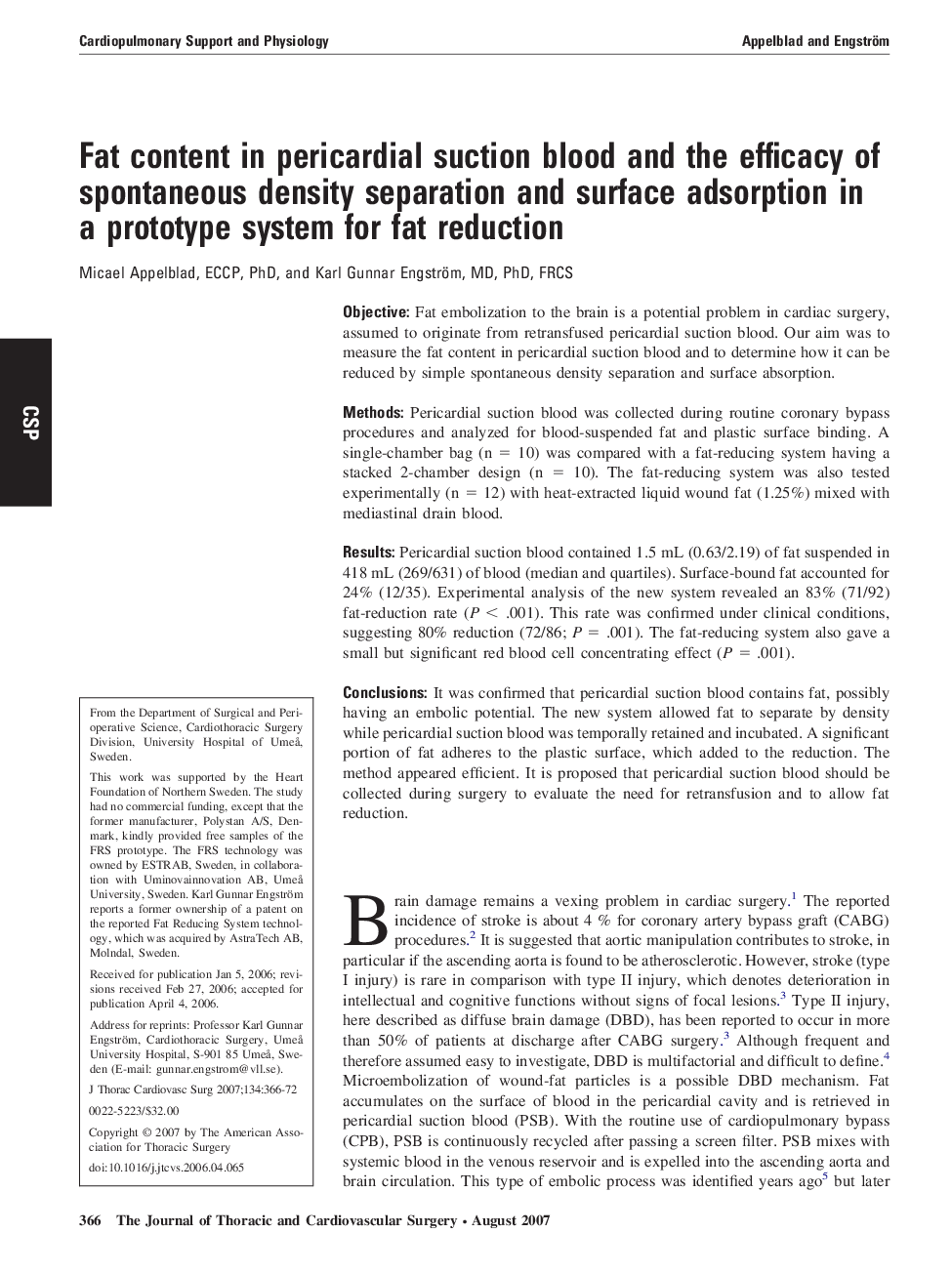| Article ID | Journal | Published Year | Pages | File Type |
|---|---|---|---|---|
| 2985903 | The Journal of Thoracic and Cardiovascular Surgery | 2007 | 7 Pages |
ObjectiveFat embolization to the brain is a potential problem in cardiac surgery, assumed to originate from retransfused pericardial suction blood. Our aim was to measure the fat content in pericardial suction blood and to determine how it can be reduced by simple spontaneous density separation and surface absorption.MethodsPericardial suction blood was collected during routine coronary bypass procedures and analyzed for blood-suspended fat and plastic surface binding. A single-chamber bag (n = 10) was compared with a fat-reducing system having a stacked 2-chamber design (n = 10). The fat-reducing system was also tested experimentally (n = 12) with heat-extracted liquid wound fat (1.25%) mixed with mediastinal drain blood.ResultsPericardial suction blood contained 1.5 mL (0.63/2.19) of fat suspended in 418 mL (269/631) of blood (median and quartiles). Surface-bound fat accounted for 24% (12/35). Experimental analysis of the new system revealed an 83% (71/92) fat-reduction rate (P < .001). This rate was confirmed under clinical conditions, suggesting 80% reduction (72/86; P = .001). The fat-reducing system also gave a small but significant red blood cell concentrating effect (P = .001).ConclusionsIt was confirmed that pericardial suction blood contains fat, possibly having an embolic potential. The new system allowed fat to separate by density while pericardial suction blood was temporally retained and incubated. A significant portion of fat adheres to the plastic surface, which added to the reduction. The method appeared efficient. It is proposed that pericardial suction blood should be collected during surgery to evaluate the need for retransfusion and to allow fat reduction.
